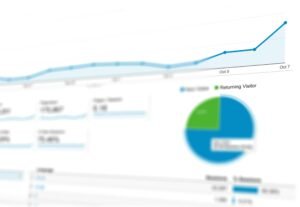Ready to skyrocket your website’s performance? Have you ever felt like you’re blindly throwing darts at a board, hoping something sticks? 🤔 That’s what managing a website can feel like without solid data.
In this post, we’re diving into the 10 benefits of SEO data analysis for websites. By harnessing this data, you can transform your site from “meh” to “wow.”
Whether you’re looking to boost traffic, improve user experience, or beat your competitors, SEO data analysis will give you the tools to make it happen. Let’s jump in and decode those numbers! 🚀
What is SEO Data Analysis?
SEO data analysis refers to the process of collecting, interpreting, and acting on data from search engines to enhance your website’s performance. Think of it like a detective’s magnifying glass — it helps you understand what’s working, what’s not, and how to improve. In simple terms, it’s a way to peek into how search engines view your site.
But why does it matter? Imagine running a marketing campaign without any data to back it up. It’s like shooting arrows in the dark. SEO data analysis eliminates that guesswork, helping you tailor your content to your audience’s needs. This not only improves your SEO but also makes your marketing efforts more efficient.
The advantages? SEO data analysis uncovers high-traffic keywords, improves user experience, boosts rankings, and increases organic conversions. It’s the difference between using a paper map and a GPS for your website strategy.
Benefits of SEO Data Analysis
1. Increases Organic Traffic
SEO data analysis identifies the keywords and strategies that bring the most organic traffic to your site. Organic traffic refers to visitors who land on your site via unpaid search engine results. By focusing on these, you can grow your audience without spending money on ads.
2. Improves User Experience
Data shows how users behave on your site. Are they clicking around or leaving after one page (bounce rate)? By analyzing this data, you can adjust your website’s design and content to make it more engaging and user-friendly. For instance, if users frequently leave a page quickly, it could signal the content isn’t relevant or the layout is confusing.
3. Boosts Conversion Rates
Analyzing SEO data reveals the search terms people use to find your site, allowing you to match your content to their intent. When your content closely aligns with what users want, they’re more likely to take action — whether it’s signing up for a newsletter, making a purchase, or engaging with your content.
4. Improves Keyword Targeting
SEO data analysis helps identify the high-performing keywords for your website. By understanding which terms bring the most traffic, you can optimize your content around them. You can also discover opportunities for long-tail keywords — specific phrases that users search for — which often have less competition and higher conversion rates.
5. Helps Spot Technical SEO Issues
Tools like Google Search Console can point out technical issues that might be holding back your rankings, such as slow page load speeds, broken links, or mobile usability issues. Fixing these problems can improve your site’s performance and ensure a smooth user experience, which in turn boosts your SEO.
6. Uncovers Backlink Opportunities
Backlinks (links from other websites to yours) are a huge factor in SEO rankings. SEO analysis tools like Ahrefs allow you to track who’s linking to your competitors but not to you. This creates an opportunity to reach out and earn those valuable links, which will increase your site’s authority and visibility.
7. Enhances Competitor Analysis
Through competitor analysis, you can see what strategies are working for others in your industry. By analyzing their SEO performance — such as keywords they rank for, their backlink profile, and content performance — you can adjust your own strategy to stay competitive.
8. Optimizes Content for Search Engines
When you understand what your audience is searching for, you can craft content that meets their needs. SEO data analysis reveals trends in search behavior, allowing you to update old content, create new pieces, and structure them in a way that appeals both to readers and search engines.
9. Reduces Marketing Costs
By focusing on strategies that deliver the best results, SEO data analysis helps you allocate resources more effectively. This means you can cut down on unnecessary ad spend, invest in high-performing tactics, and get more value from your marketing budget.
10. Provides Actionable Insights
SEO data analysis goes beyond vanity metrics (like total site visits). It provides actionable insights into what’s working and what needs improvement, allowing you to make informed decisions and continually refine your strategy.
Key Tools for SEO Data Analysis

Google Analytics
Google Analytics is the cornerstone of website analysis. It helps you track user behavior, from where they come from (traffic sources) to how long they stay on your site. With this tool, you can monitor your site’s performance, see which pages perform best, and identify areas to improve user engagement.
Google Search Console
This tool offers direct insights into how Google views your site. It shows data on search queries, click-through rates (CTR), and highlights any issues, such as indexing errors or mobile usability problems. It’s an essential tool for improving your site’s SEO.
Ahrefs
Ahrefs is ideal for competitor analysis and backlink tracking. It helps identify keywords your competitors rank for and provides data on their backlink profiles. By using Ahrefs, you can uncover gaps in your SEO strategy and discover new opportunities for growth.
SEMrush
SEMrush is another excellent tool that helps with keyword research, competitor analysis, and tracking your website’s performance. It’s great for understanding which keywords drive the most traffic and which areas of your SEO strategy need fine-tuning.
How to Track Important SEO Metrics
Tracking crucial SEO metrics is like having a roadmap for your website’s performance. It shows you where you are and where you need to go. Let’s break down some key metrics you should monitor.
First up, organic search traffic. This tells you how many visitors come to your site through search engines without paid ads. It’s a great way to measure if your SEO efforts are succeeding. Think of it as store foot traffic; more visitors usually mean more potential customers. If you notice a dip in organic traffic, it might be time to revisit your SEO strategy and tweak your keywords or content.
Next, there’s the bounce rate. This metric shows the percentage of visitors who leave your site after viewing just one page. A high bounce rate can signal that your site isn’t engaging enough or not meeting visitors’ expectations. It’s like people walking into a store, taking one look, and then leaving. You want to keep them browsing, so consider improving your site’s user experience or making your content more relevant.
Another crucial metric is the click-through rate (CTR). This measures how often people click on your site’s link when it appears in search results. A higher CTR means your site is compelling enough to make people want to visit. It’s like having an attractive store window display that lures people inside. If your CTR is low, you might need to work on your meta descriptions and titles to make them more enticing.
Here are the key metrics you should track:
- Organic search traffic
- Bounce rate
- Click-through rate (CTR)
- Keyword rankings
- Backlinks
- Page load speed
Best Practices for SEO Data Analysis

Conduct Regular Keyword Research
SEO is constantly evolving, and so are the search terms people use. Regularly updating your keyword list based on data helps you stay ahead of trends and keep your content relevant.
Monitor User Behavior
Tracking how visitors interact with your site — which pages they visit, how long they stay, and which actions they take — helps you optimize for a better user experience. By understanding this behavior, you can adjust your strategy to keep users engaged longer and encourage them to convert.
Analyze Competitors
Keeping an eye on your competitors’ SEO efforts gives you valuable insights into what works and what doesn’t. Tools like Ahrefs or SEMrush allow you to track their rankings, keywords, and backlinks, giving you a leg up on improving your own strategy.
Track Website Performance Metrics
SEO data analysis isn’t just about keywords; it’s also about ensuring your site runs smoothly. Key metrics like page load speed, bounce rate, and mobile responsiveness all play a role in how search engines rank your site. Regularly monitoring these ensure you maintain peak performance.
Practical Tips for SEO Data Analysis
Set Up Custom Reports
Custom reports in tools like Google Analytics allow you to focus on the data that matters most. By zeroing in on the most relevant metrics, you can gain more targeted insights and refine your strategy accordingly.
Use Data Visualization Tools
Tools like Google Data Studio or Tableau transform raw data into visual formats like charts and graphs, making complex information easier to understand. This helps you spot trends, relationships, and insights that may otherwise go unnoticed.
Regularly Update Content
Using data from your analysis, regularly refresh your website’s content to keep it relevant and optimized for SEO. This helps your site stay up-to-date with the latest search trends and improves user engagement.
Case Studies: Success with Data-Driven SEO

Real-world examples show businesses using data-driven SEO strategies see significant improvements in organic traffic and search engine rankings. Many companies have witnessed a surge in website visits and better positions in search results. Businesses identify what’s working by analyzing data and tweak their strategies for even better results. It’s like having a GPS for your SEO journey, ensuring you reach your destination faster and more efficiently.
One standout example is Dilate Digital. They streamlined their SEO strategy by consolidating data from six different tools into one. This move didn’t just simplify their workflow; it made their SEO efforts more effective. They could easily see which keywords were driving traffic and which areas needed improvement. This consolidation led to more informed decisions, boosting their organic traffic and search rankings.
Case Study: Dilate Digital
Dilate Digital faced the challenge of managing data from multiple SEO tools. By integrating the data into a single platform, they could analyze it more efficiently. This integration helped them:
- Identify high-performing keywords
- Spot gaps in their content strategy
- Track user behavior more accurately
The result? Dilate Digital saw a significant improvement in organic traffic and search engine rankings. By simplifying their data analysis process, they focused on making strategic decisions that paid off big time. It’s a prime example of how effective SEO data analysis can transform a business’s online presence.
Final Words
SEO data analysis is a game-changer for improving website performance. By analyzing critical metrics like organic traffic, bounce rate, and keyword rankings, you can uncover insights that lead to actionable improvements. Using the right tools and following best practices, you can fine-tune your strategy, improve user experience, and ultimately drive more traffic to your site.
The key takeaway? Stay on top of your SEO data, and it will guide your website toward long-term success. Explore more with WikiWayne!
FAQs
What is SEO data analysis?
SEO data analysis involves collecting and interpreting data from search engine activities to improve website visibility and performance.
What is analytics data for SEO?
Analytics data for SEO includes metrics like organic traffic, bounce rate, keyword rankings, and backlinks to gauge and enhance website performance.
How to do an SEO analysis?
To do an SEO analysis, start by identifying key metrics like organic traffic, bounce rate, keyword rankings, and backlinks, then use tools like Google Analytics, Google Search Console, and Ahrefs to gather and interpret data.
How do you collect data for SEO?
Use tools like Google Analytics, Google Search Console, SEMrush, and Ahrefs to collect data on user behavior, keyword performance, backlinks, and website traffic for SEO.
How often should I conduct SEO data analysis?
Regular SEO data analysis is crucial—aim for at least once a month. This frequency allows you to stay updated on trends, adjust your strategy, and respond to changes in user behavior or search algorithms effectively.




